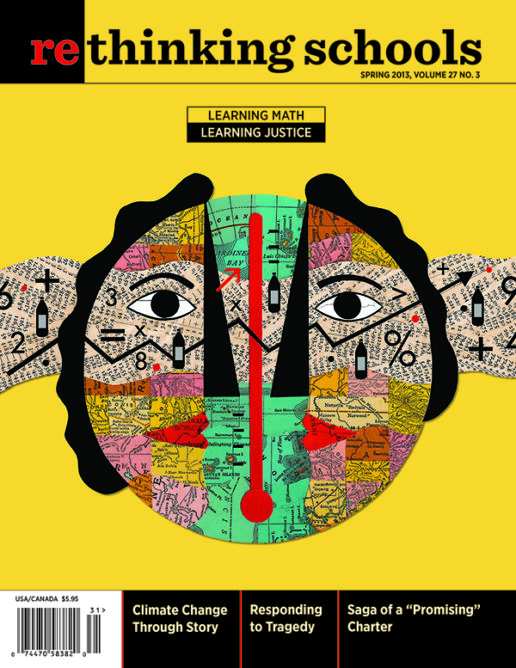Preview of Article:
Transparency of Water
A workshop on math, water, and justice
Illustrator: Martha Merson
If you are an environmental organizer, like Selene, your classroom is a conference room, the community garden, or a church parking lot. Your students are everyone—from toddlers to the elderly; they come with a variety of levels of formal education.Your goal is to increase environmental justice, community well-being, and individuals’ health.
If you are a math educator/curriculum writer with an interest in data, like Martha, you teach in adult ed and K–12 classrooms, libraries, and living rooms—anywhere you can sneak in math. The teaching starts with a provocative statistic or a document with unfathomable numbers. Your students are often math averse. Their motivation could be to earn a high school diploma or simply to learn more. Many have plans to put learning to use in their communities, churches, and families. Your goal is to encourage adults and youth to take a new look at numbers, to ask questions.
Statistics for Action (SfA) brought us together. SfA provides organizers and community members with tools and resources for understanding and using scientific data in communities affected by environmental contamination. During the project, we led an SfA-inspired workshop in Spanish designed to probe participants’ distrust of tap water and arm them with skills and knowledge to take on water quality/delivery issues.

